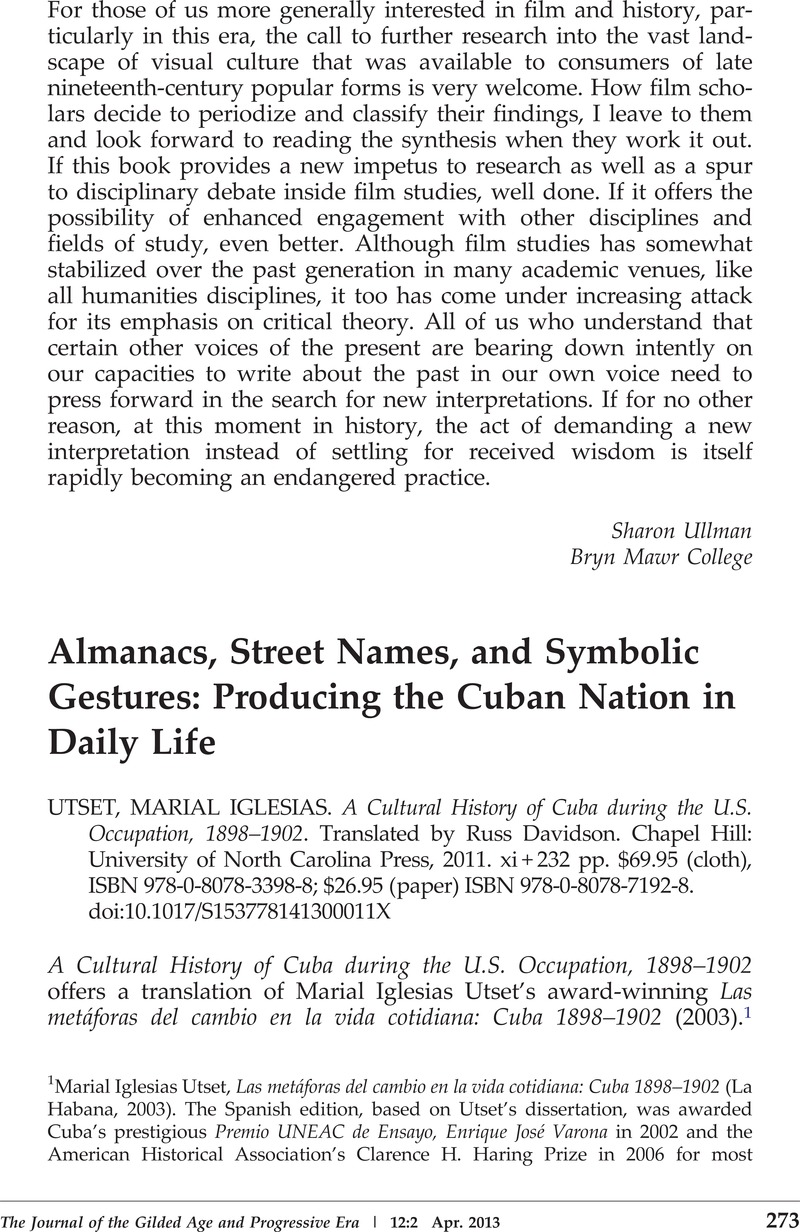No CrossRef data available.
Published online by Cambridge University Press: 11 April 2013

1 Utset, Marial Iglesias, Las metáforas del cambio en la vida cotidiana: Cuba 1898–1902 (La Habana, 2003)Google Scholar. The Spanish edition, based on Utset's dissertation, was awarded Cuba's prestigious Premio UNEAC de Ensayo, Enrique José Varona in 2002 and the American Historical Association's Clarence H. Haring Prize in 2006 for most outstanding book on Latin American history published between 2001 and the award year.
2 In the introduction alone, sections have been removed and new material added without any documentation in the translator's note. This is a significant problem, given that a full chapter of Utset's study takes up the issue of linguistic colonization. Other changes made by the translator undermine the work as a performance studies project. The translator's note suggests that English-language words used in the original Spanish appear in quotations, yet the term performance does not, indicating its use in the course of translation rather than in the original. However, Utset's use of the English-language term (which does not exist in Spanish) is key to her methodology. Also in the introduction, the translator three times misuses “performative,” a term that does not appear in Utset's original. Scholars should attribute these flaws to the translation rather than to Utset's critical perspective. For analysis of the uses of “performance,” “performativity,” and lo performático in Spanish and English, see Taylor, Diana, The Archive and the Repertoire: Performing Cultural Memory in the Americas (Durham, 2003)CrossRefGoogle Scholar.
3 Pérez, Louis A. Jr., On Becoming Cuban: Identity, Nationality, and Culture (Chapel Hill, 1999)Google Scholar. Also Pérez, Cuba under the Platt Amendment (Pittsburgh, 1986)Google Scholar; and Pérez, The War of 1898: The United States and Cuba in History and Historiography (Chapel Hill, 1998)Google Scholar. Among major Cuban works that Usted cites (106, 170n18) as especially relevant: Cruz, Manuel de la, Episodios de la Revolución cubana (La Habana, 1967)Google Scholar; Roa, Ramón, A pie y descalzo de Trinidad a Cuba (Miami, 1977)Google Scholar; and Collazo, Enrique, Desde Yara hasta el Zanjón: apuntaciones históricas (La Habana, 1967)Google Scholar.
4 Pérez, On Becoming Cuban, 8.
5 Anderson, Benedict, Imagined Communities: Reflections on the Origin and Spread of Nationalism (1983; London, 1991)Google Scholar.